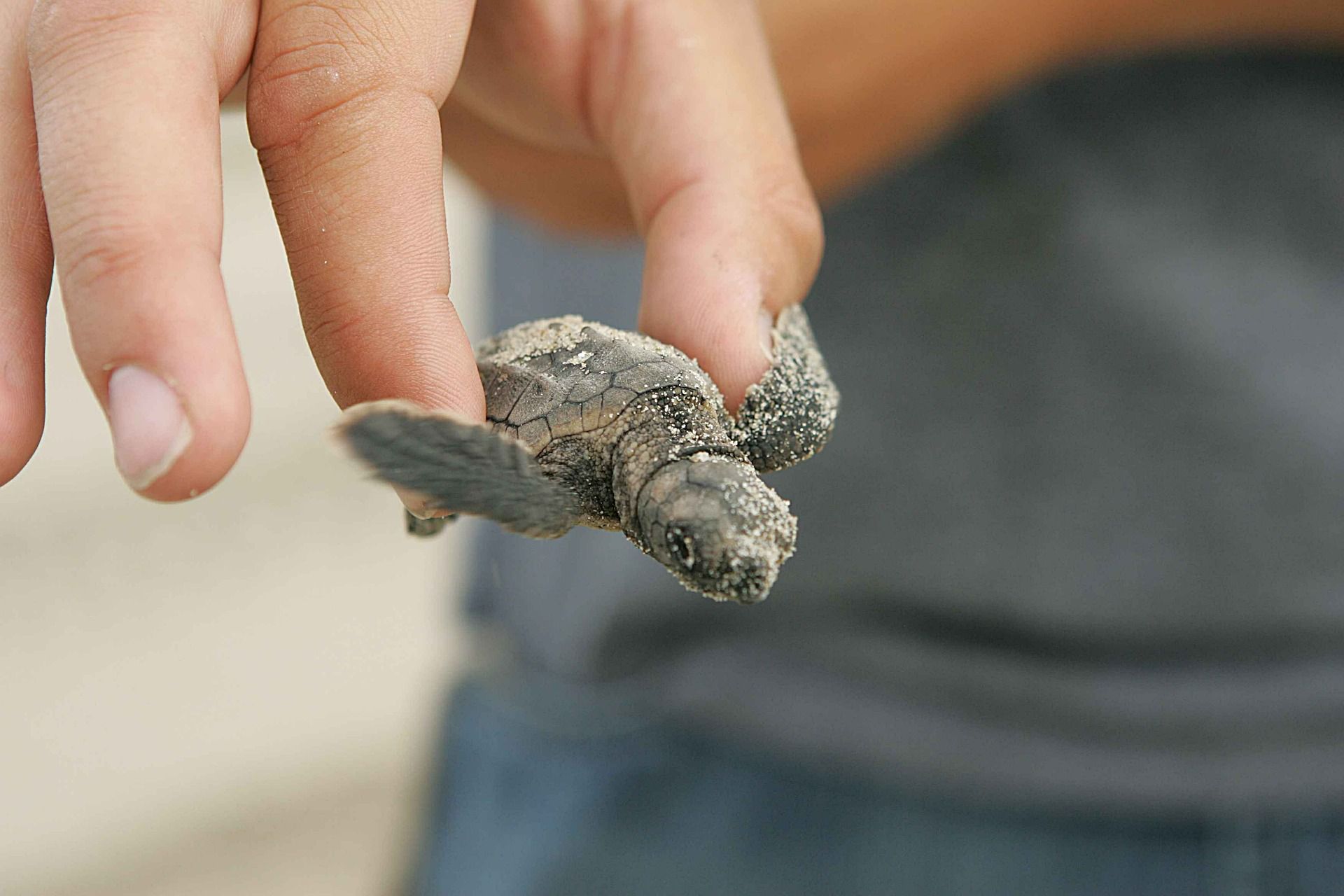Turtle Watching
You always wanted to watch turtles? On Boa Vista the loggerhead turtle is at home. On the beach it builds its nest and lays its eggs. Depending on the season you can watch the turtles laying their eggs or (with a little luck) hatching.
The loggerhead turtle:
The loggerhead turtle (Caretta caretta) is a representative of the sea turtles and is probably the best known and most common of this group. Most knowledge about sea turtles in general comes from research on this species.
In the loggerhead turtle, the carapace of the dorsal shell (carapax) grows up to 120 centimetres long. It reaches a weight of up to 110 kilograms. The basic colouring of the animal is reddish-brown, adult animals get a yellow-brown belly armour. It differs from the hawksbill turtle (Eretmochelys imbricata) by having a thicker head with more powerful jaws and five instead of four pairs of rib shields.
The males can be recognised by their longer tail and longer, curved claws. Their plastron is slightly shorter. Their carapace is more flattened and wider.
A study on free-living loggerhead turtles showed that the animals of this species have a magnetic sense.
Their diet consists mainly of crabs, cephalopods, jellyfish, sea urchins and other animals, but they also eat seaweed. In stomachs of studied loggerhead turtles, however, hatchlings of their own species have been found.
Mating usually takes place at the water surface. The females lay several clutches of eggs, each containing between 23 and 178 eggs. The distance between the individual egg deposits is between 12 and 23 days. The eggs are round and have a leathery shell. The incubation period depends on the ambient temperature and is between 49 and 80 days. The largest known nesting colony of this turtle species is found on the island of Masirah, which belongs to the Sultanate of Oman. There, an average of 30,000 loggerhead turtles lay their nest pits there every year.
Due to their meat, eggs, fat (for cosmetics or as a potential remedy) and tortoise shell, loggerhead turtles were hunted intensively until their populations collapsed. Today both subspecies are threatened with extinction and are under international protection by the Washington Convention on International Trade in Endangered Species. At present, the main threat to the animals comes from the trawl nets used by crab fishermen, which claim many victims every year. Animal welfare activists and organisations are working internationally to ensure the survival of the species, for example by guarding beaches where eggs are laid, as in Turkey, Zakynthos (Greece) and Costa Rica. In 2006, the first such programme took place on the 18-kilometre-long coast of the village of Anamur in southern Turkey and, to the surprise of all those involved, over 600 clutches of eggs were protected. On the Cape Verde Islands the turtles are also threatened by hunters. The Turtle Foundation patrols the nesting beaches to ensure the conservation of the population. WWF and the Turtle Protection Association are following the developments on a political level.
Source: Wikipedia
